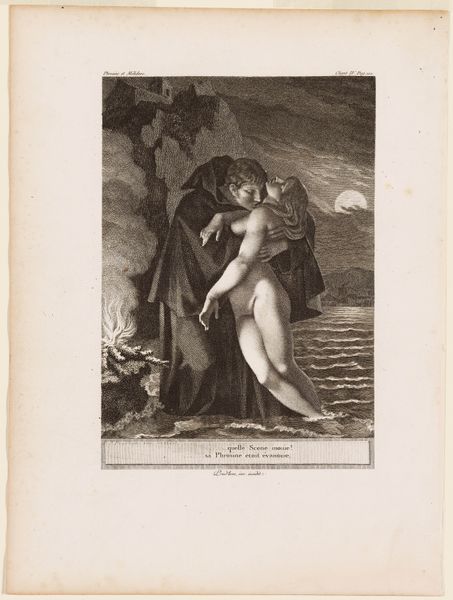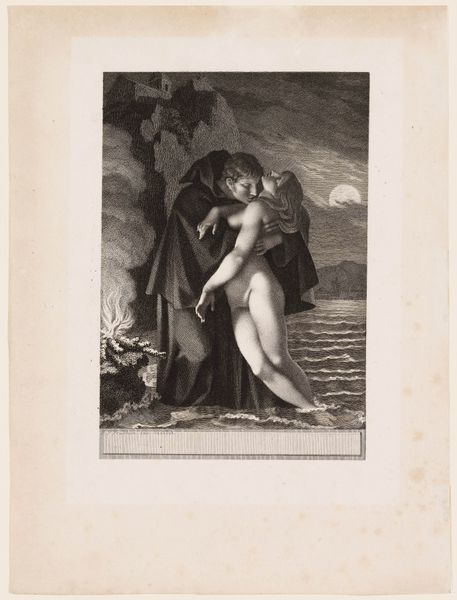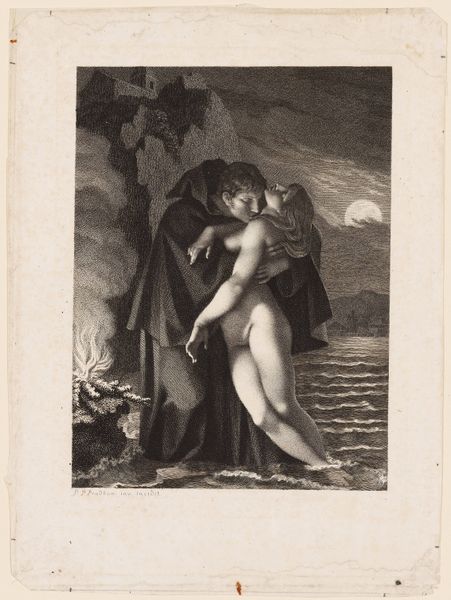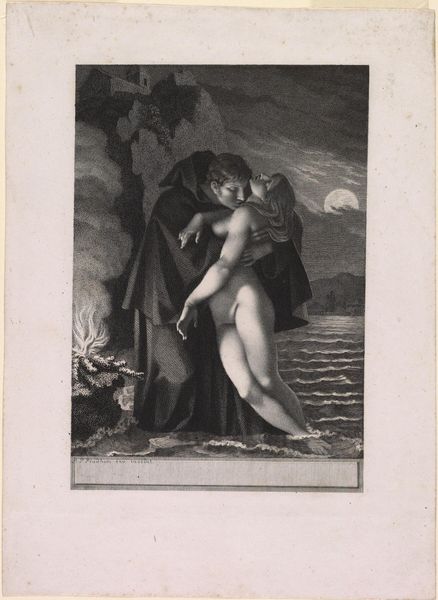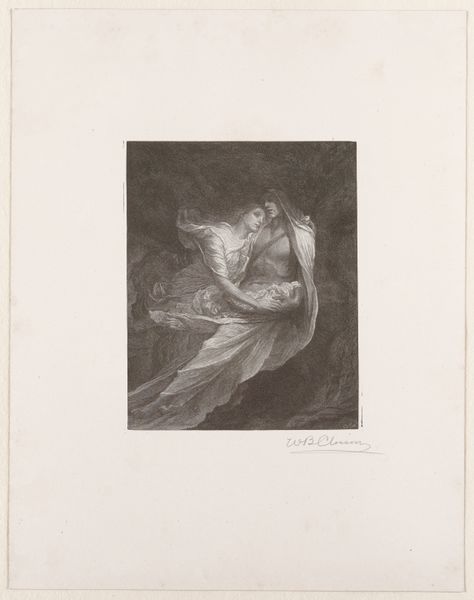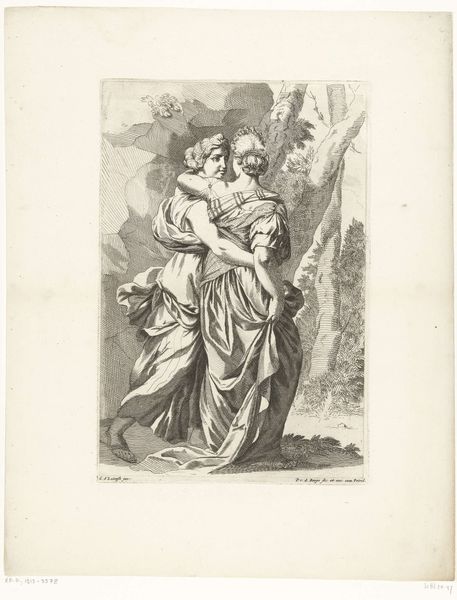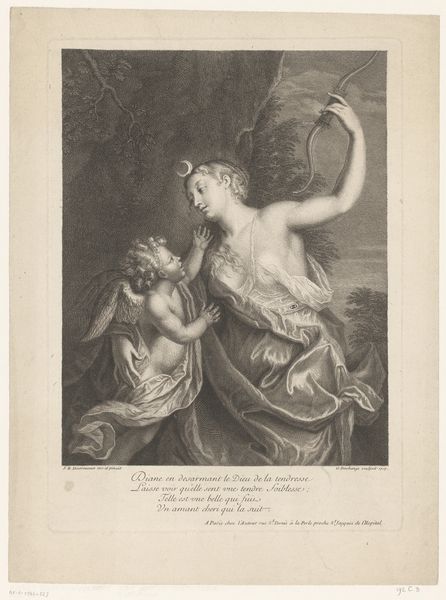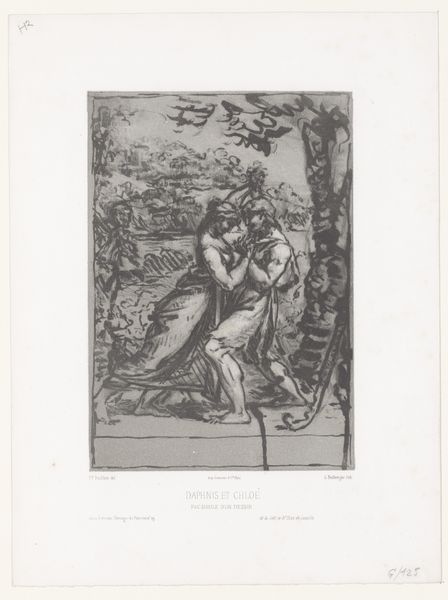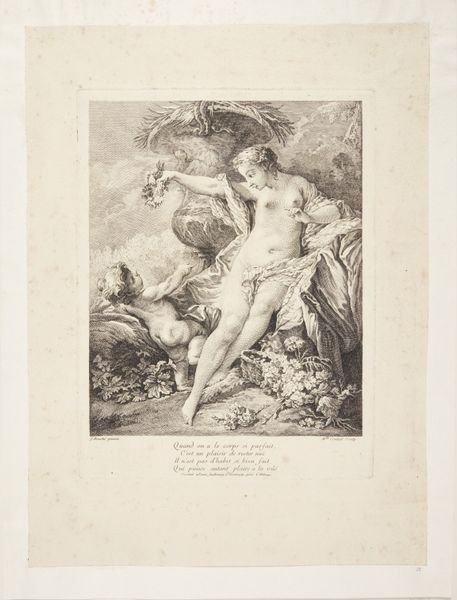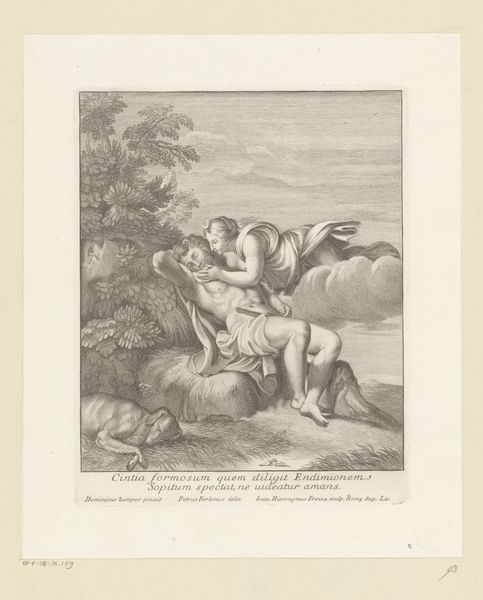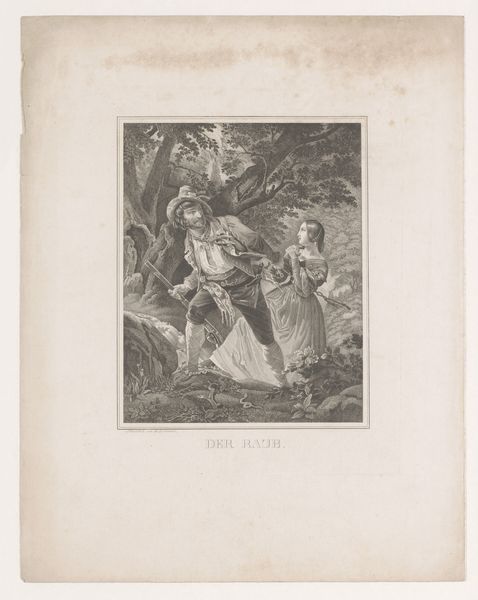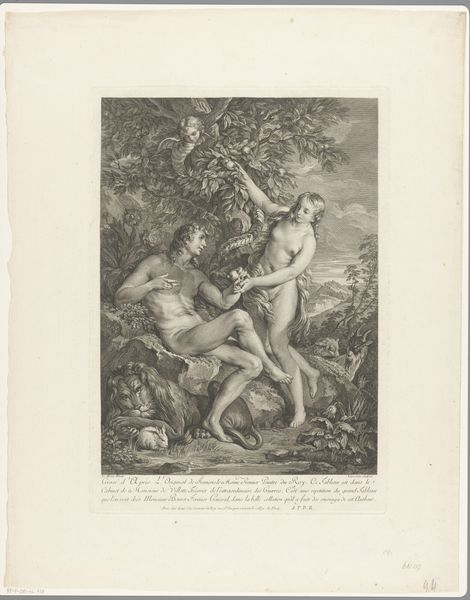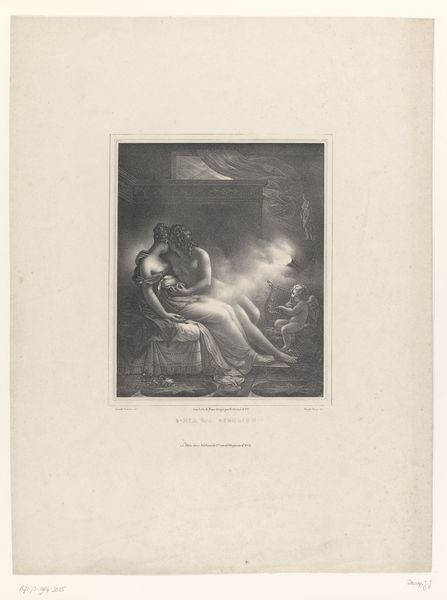
print, etching, engraving
#
allegory
# print
#
etching
#
romanticism
#
france
#
history-painting
#
nude
#
remaining negative space
#
engraving
Dimensions: 8 1/4 x 5 11/16 in. (20.96 x 14.45 cm) (plate)14 1/16 x 9 7/8 in. (35.72 x 25.08 cm) (sheet)
Copyright: Public Domain
Editor: Here we have "Phrosine et Mélidore," an engraving and etching made around 1797 by Pierre-Paul Prud'hon. It depicts two figures locked in an embrace amidst a dramatic, moonlit landscape. I'm struck by the contrast between the dark, cloaked figure and the pale, almost ethereal woman. What do you see when you look at this print? Curator: It’s interesting you notice the stark contrasts. To me, this piece speaks volumes about the means of its production. Consider the etching and engraving techniques employed – the way lines are physically incised into the metal plate to create this dramatic chiaroscuro effect. This isn't just about aesthetics; it's about the physical labor involved, the materials used, the very *making* of the image. Look at how the light is rendered, it’s almost theatrical. Can we think about the accessibility that printmaking offered to audiences at the end of the 18th Century versus painting, for instance? Editor: That's a great point about the physicality. It almost feels like you can feel the artist's hand in creating those fine lines, like a sort of choreography of labor and art! And that accessibility through prints connects with audiences consuming art on different levels than just high art. Curator: Exactly! And within Romanticism itself, how do you think an etching like this disrupts notions of "genius," given its reliance on reproducibility and even the potential for multiple hands in its creation? Does that shift your understanding of the subject matter depicted? Editor: It does! Considering the themes of love and rescue within that material context, the focus on mass consumption almost democratizes those grand narratives. Curator: Precisely. It underscores that the emotional experience isn’t exclusive to an elite audience. That making something reproducible made those themes and aesthetics a part of contemporary social contexts. Editor: I hadn't considered that at all, thinking about its relationship with labor and its consumers makes me see this quite differently. Curator: Me too.
Comments
No comments
Be the first to comment and join the conversation on the ultimate creative platform.

